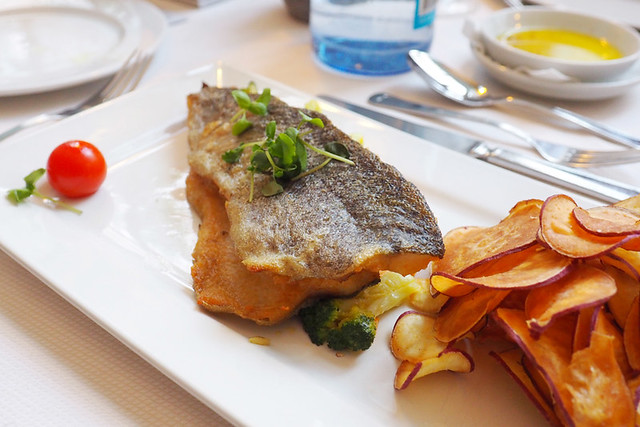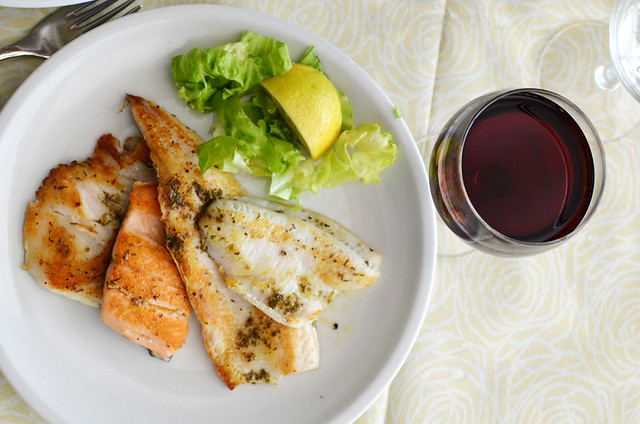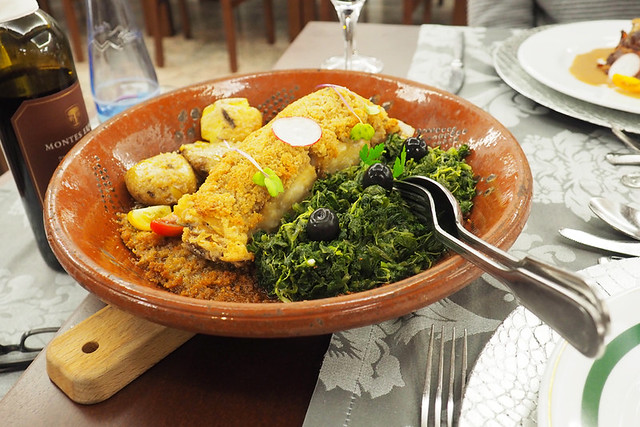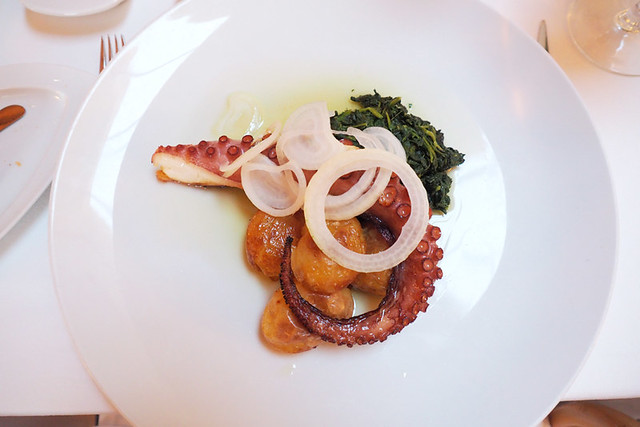For the second time this year, and in the same area, I broke one of our gastronomic rules. When going local, the rule is to mainly stick to meat dishes whenever travelling in traditional, mountainous areas and opt for fish or seafood in coastal areas. It doesn’t matter which European country, we apply this to many destinations we visit.

There are a couple of reasons we do this in locations where culinary, and other, traditions have rock solid foundations. One is to do with the freshness of locally available produce. Where fresh local produce is used, you usually find flavours are more intense. In many rural areas, especially the more sparsely populated European countries, farming is of the old school variety. Livestock have acres of space in which to roam. The duck farm at the end of our road has no fences, the ducks waddle wherever they want. In the cork oak forest nearby, Iberian black pigs squeal and snuffle their way through the land with as much freedom as their wild boar relations. A wild herb specialist in Slovenia remarked to us the animals on her farm were very happy ones. They live a good life… until they don’t. It sounds cold-hearted and mercenary to say this, but research suggests happy animals taste better.

What’s available locally has a strong bearing on gastronomic specialities in an area. And what those local specialities are tends to be what restaurants do best. In the hills and mountains these dishes are generally meat based; at the coast they’re whatever salty gifts the sea offers.
For foodie travellers, finding out in advance what the most popular traditional dishes are in a given area can lay the foundations for a satisfyingly culinary experience.

Some folk get it spectacularly wrong. We call this the Mumford syndrome. The Mumfords were a couple we briefly (thankfully) encountered on a trip to Sri Lanka. They refused to eat anything local, choosing instead the ‘unadventurous tourist option’ of roast beef and Yorkshire pudding in a lodge in Yala National Park. Unsurprisingly, they complained throughout it wasn’t up to the standard they were used to in Blighty whilst we lapped up the same, delicious, Sri Lankan curries our guides were eating. Since then, anyone in a traditional restaurant who orders something which clearly isn’t a local dish and then moans about it not being very good is deemed as being a Mumford.

I nearly penned an ‘outraged’ reply to a post on Tripadvisor about restaurants in Sesimbra on the Setúbal Peninsula. Whenever you mention Sesimbra to someone in Portugal, the automatic response is often “fantastic seafood restaurants”. The town is full of them. Wander its narrow backstreets and you pass numerous chefs grilling fish on soot-blackened barbecues cut into the wall. However, the Tripadvisor reviewer wasn’t impressed by these quaint little joints, commenting “…it is pretty expensive and in our opinion the village/town needs more options than the many seafood/fish variety.” I don’t think €9 is expensive for the likes of sea bass or, a tasty local speciality, peixe espada preto (black scabbard fish), but hey ho. However, bitching about a coastal town known for its fish restaurants because it has too many suggests they were in the wrong place for them. I suspect they picked the town because of its warm, sunny weather and superb, golden beach. Portuguese people travel to Sesimbra just to eat in its restaurants, it’s not a purpose-built resort designed solely for sun-seeking tourists. It doesn’t have a selection of homogeneous, blandly inoffensive, international restaurants. This is what I initially wanted to add as a reply, but diplomacy and all that jazz made me resist.

It’s an example which illustrates how important it can be to think about what local gastronomy might consist of when considering where to visit. For anyone who’s not a fan of fish and seafood, a town on the coast with a fishing heritage probably isn’t the best choice.
In traditional rural areas inland meat is king, queen, prince and princess. If there are lakes/rivers in the vicinity then freshwater fish might get a look in, but mostly menus are dominated by meat. We’re both going through a ‘fallen out of love with chunks of red flesh’ phase so aren’t excited by the prospect of meaty menus. Which is why on a recent trip around the north of Portugal I mostly gave the meat dishes a body swerve, seeking out fish instead, and breaking my cardinal culinary rule. However, we’d been in the area a couple of times in previous months and knew it was possible to keep meat intake to a minimum over a short period.

Subsequently, in this particular instance, I was still able to go (sort of) local with the gastronomy without having to revert to ‘doing a Mumford.‘ Bacalhau is popular across Portugal, so always features on menus in various guises. As it’s salt cod, freshness doesn’t matter. Another reliable option commonly available was polvo (octopus). Octopus tastes better after it’s been frozen as the freezing process helps break down fibres in the flesh, making it more tender. A chef in Évora told us this after he’d served us one of the most tender tentacles we’ve eaten.
Sometimes there are occasions when non-traditional dishes on menus simply sound, and are, more enticing. On our north Portugal trip Andy ordered a risotto in a town tucked away in a narrow valley. What arrived wasn’t risotto as we know it, but it was flavoursome and enjoyable. You take your chances.
Then there are those times you have to go for the local speciality even though it really doesn’t sound appealing at all because, well, just because it has to be tried… once at least. Buckwheat mush and sour milk in a shepherd’s hut in Slovenia springs to mind.

Mind you, when we emerge from traditional areas to venture into more cosmopolitan towns or cities the rule gets packed away, along with sweaty hiking clothes, and we order whatever we have a yen for, traditional or not. In this latest instance, when we got to Braga it was a Portuguese take on sushi… and it was bloody sensational.




Be the first to comment